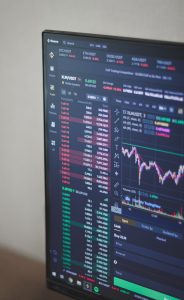When it comes to trading in the foreign exchange market, one of the most important decisions traders face is what time frame to use. The time frame refers to the period of time that each candlestick or bar on a chart represents, and it can vary from a few seconds to several years. The choice of time frame can have a significant impact on trading strategies, risk management, and overall profitability. In this article, we’ll explore the different time frames available and the factors that traders should consider when choosing the appropriate time frame for their trading style.
Why Time Frame Matters in Forex Trading
The choice of time frame can have a profound impact on a trader’s profitability. Different time frames offer different levels of volatility, which in turn can affect the accuracy of technical analysis, the effectiveness of trading strategies, and the amount of risk that a trader takes on. For instance, a trader who uses a very short time frame, such as a one-minute chart, is likely to experience high volatility and rapid price fluctuations. This can make it challenging to identify trends and patterns, and it can also increase the risk of false signals and whipsaws. On the other hand, a trader who uses a longer time frame, such as a weekly chart, is likely to experience lower volatility and more stable trends. This can make it easier to identify reliable signals, but it can also mean missing out on opportunities for quick profits.
Factors to Consider When Choosing a Time Frame
When choosing a time frame, traders should consider several factors, including their trading style, risk tolerance, and market conditions. Here are some of the most important factors to keep in mind:
– Trading style: The time frame should match the trader’s preferred trading style. For instance, a scalper who seeks to profit from small price movements may prefer a short time frame, while a swing trader who seeks to capture larger trends may prefer a longer time frame.
– Risk tolerance: The time frame should match the trader’s risk tolerance. A trader who is comfortable with high levels of volatility and risk may prefer a shorter time frame, while a trader who is more risk-averse may prefer a longer time frame.
– Market conditions: The time frame should match the current market conditions. For instance, if the market is experiencing high volatility or rapid price fluctuations, a shorter time frame may be more appropriate. On the other hand, if the market is stable and trending, a longer time frame may be more appropriate.
– Technical analysis: The time frame should allow for accurate technical analysis. Traders who rely on technical indicators and chart patterns should choose a time frame that is appropriate for the indicators and patterns they use.
Common Time Frames Used in Forex Trading
There are several common time frames used in forex trading, each with its own advantages and disadvantages. Here are some of the most common time frames:
– Scalping: A scalper may use a time frame as short as a few seconds or minutes. This allows the trader to capitalize on small price movements and take advantage of high volatility. However, scalping requires a high level of skill and discipline, as well as a fast internet connection and low-latency trading platform.
– Day trading: A day trader may use a time frame of a few hours, such as a 15-minute or 30-minute chart. This allows the trader to capture intraday trends and take advantage of moderate volatility. Day trading requires a solid understanding of technical analysis, as well as a disciplined approach to risk management.
– Swing trading: A swing trader may use a time frame of several days or weeks, such as a four-hour or daily chart. This allows the trader to capture longer-term trends and take advantage of lower volatility. Swing trading requires patience and a long-term perspective, as well as a solid understanding of fundamental analysis.
– Position trading: A position trader may use a time frame of several months or years, such as a weekly or monthly chart. This allows the trader to capture major trends and take advantage of very low volatility. Position trading requires a solid understanding of macroeconomic trends and a long-term investment strategy.
Conclusion
Choosing the appropriate time frame is a crucial aspect of forex trading. Traders must take into account their trading style, risk tolerance, market conditions, and technical analysis when selecting a time frame. There is no one-size-fits-all solution to this decision, as each trader’s needs and preferences will be different. Ultimately, the key to success in forex trading is to choose a time frame that aligns with your goals and allows you to execute your trading strategy with confidence and discipline.





